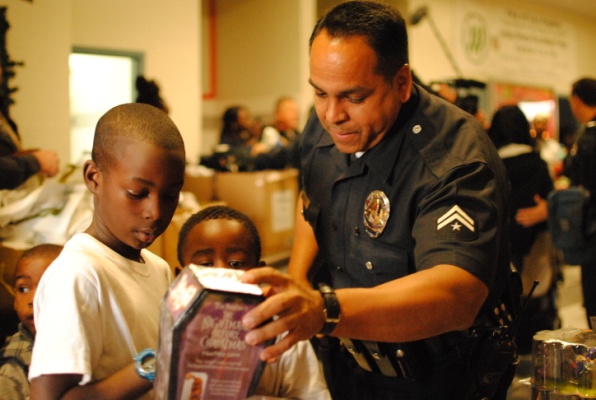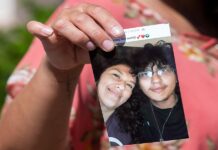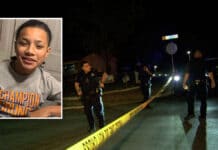
Obama has recently praised a Washington D.C. police officer who danced with a local high school aged kid, stating “Who knew community policing could involve the Nae Nae?” He also commented that this was a “Great example of police having fun while keeping us safe.” The recent Tweets from POTUS have brought new attention to the community policing model of police work. A model which while many in the police community praise, its true effectiveness has yet to truly be proven.
Who knew community policing could involve the Nae Nae? Great example of police having fun while keeping us safe: https://t.co/ZGeTDm6OYw
— President Obama (@POTUS) October 29, 2015
A post accompanying the original video, which was posted on 17-year-old Ballou High School senior Aaliyah Taylor’s Facebook page, explained that the officer had asked two students to disperse.
So basically I was trynna get to this girl but the police told me to go home so we made this deal if i win u leave but if u win I step andddddd she step ?✌?️
Posted by Adore Liyah on Tuesday, October 27, 2015
I worked for an agency that had around 1000 cops on the street. Among the patrol guys, there was a running joke about the community police unit, as they were never seen in the community. After my many years in police work, I still to this day struggle to explain what community police officers do and how they impact the community. Low priority, ongoing situations would come in such as neighbor complaints or vagrants. One would think community police would be all over that, handling issues that arise within communities before they escalate to criminality. Not so much.
One of the problems lies in the fact that police responsibilities are fairly well managed and distributed. Patrol responds to calls including in-progress as well as late reported crimes. Street Crimes and narcotics units do proactive work seeking out drugs, prostitutes, high priority warrants and so on. This leaves a gray area typically not covered by traditional policing units. What ends up happening is, the agency having the discretion as to how to utilize this extra unit, fills in gaps in service with the community policing unit. Their function will vary from agency to agency depending on the needs of the agency, not necessarily the needs of the community. For example, one community might utilize community policing officers to stand by during council meetings or to act as a liaison between the city government and community organizations. Many times the role of neighborhood watch instructor falls under this assignment. In other communities with smaller budgets, the community policing unit might function as a part time street crimes unit and part time special events security. No two community policing programs will perform the same functions from jurisdiction to jurisdiction.
The title of community policing as demonstrated is a label placed on miscellaneous functions that need to be addressed. Community policing reminds me of a singularity. Scientists are pretty sure they exist, but no one can really explain what they do. This is very different from the suggested role that community police officers should play as by national definitions and standards. According to the Bureau of Justice Assistance, community policing is, “in essence, a collaboration between the police and the community that identifies and solves community problems.” I don’t think there could be a more vague statement as to the purpose of community policing. The archetype officer is supposed to be a happy, friendly compassionate individual who gets out of his car and plays ball with the local underprivileged youths in the neighborhood. I think you have a better chance of finding bigfoot than finding this officer in the vast majority of urban areas in the US. After incidents like Ferguson and Baltimore, communities across the country are more suspicious of police and less likely to want to interact with them in a consensual encounter.
One major indicator of the failures of community policing come from comparing the amount of money spent nationally on community policing programs compared to their effectiveness as determined by local outcomes. For example, Cleveland, Tulsa, Charlestown and Baltimore have been home to the most controversial police killings in the last few years. All of these police agencies were recipients of millions of dollars in community policing grants from the Department of Justice’s COPS or Community Oriented Policing Services program. Since 1994, the DOJ has shelled out over $14 Billion in grants to police agencies to bolster community related policing programs. Cleveland PD received over $7 million dollars in grant money between 2011 and 2013 to hire and train more police officers. One of these officers shot and killed 12 tear-old Tamir Rice. Cleveland is a perfect example of how investing money in community policing programs does nothing to quell the problem of police-community relations.
So while the President may appreciate an isolated incident of positive police-community interaction, his reference and implied credit to community policing itself may have been misplaced. Community policing has been studied and implemented across the country but where are the results? Police tension in society is at an all time high and despite nationwide violent crime numbers being down, police are killing people at alarmingly increasing rates. If we want to have a community policing model that works, we first need to accurately define it in practical terms. The current idea of community policing appears to be one of pure theory with little real world application. It is hard to examine the results of community-police relations over the last twenty years and not come to the conclusion that community policing is yet another failed police model. If we hope to come up with better solutions to the problems we face in communities around the country, we would be best putting our hopes and our money into something else.
Sources:
https://www.ncjrs.gov/pdffiles/commp.pdf




